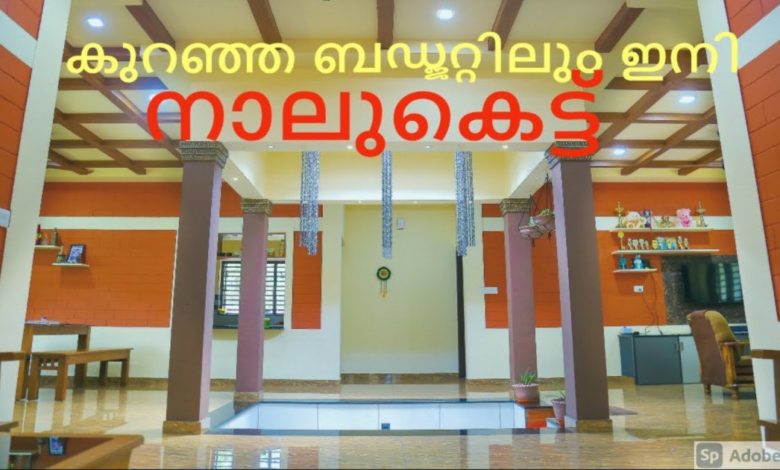The Nalukettu houses of Kerala

Convention is making a rebound among recent college grads today. Energized by the need to have a place and with be essential for a legacy there is a broad restoration old enough old traditions across India. Hued by sepia-conditioned recollections and a solid feeling of wistfulness, getting ‘back to our foundations’ is stylish, particularly among NRIs trying to purchase properties in India.
for watch detailed video about The Nalukettu houses of Kerala, see below. for getting daily updates follow our facebook page and click see first option in following button. if you interested this. give this post to your friends and relatives.for more videos, subscribe now:Muraleedharan KV
This increased aching for bygone times has been instrumental in bringing back numerous traditional compositional styles, and one of them is the nalukettu veedu in Kerala.
Structure of Nalukettu
Nalukettu implies four squares and a commonplace house worked in this design would be partitioned into a north, south, east, and west square.
The naalukettu was a regular component of the Kerala tharavadu custom, where joint families lived respectively for ages with a patriarch and female authority supervising every one of their undertakings. At the focal point of the house is a nadumuttam, which is an open yard that filled in as the point of convergence of communications between the family just as different family unit exercises and celebrations. The bigger and wealthier families had ettukettu or, the more uncommon, pathinaarukettu houses highlighted eight and 16 squares with two and four patios individually. These houses were constructed following the standards of antiquated thachu shastra or the study of carpentry and created during the eighteenth and nineteenth hundreds of years, when the Nairs and Namboodiris overwhelmed the general public with their influence and riches.
These blue-blooded families who prided on their genealogy and the name of their tharavadu would fabricate broad naalukettu homes that would highlight a forest with a snake hill to encourage the well known love of snakes, a basil leaves plant establishment made of stone or block, and even a lake for the select utilization of the family. Naalukettus can be rambling, altogether based on the ground floor or can go up to three stories high.
Rich and many-sided detail
Ordinarily made of teak wood or the wood from wild jackfruit trees, block, and mud, these houses had predominant ventilation and lighting that kept the house sufficiently bright and circulated air through consistently. A padippura is a distinctive element on a naalukettu entryway comprising of a detailed, sanctuary like gopuram. The passage to the house would have a verandah intended to get guests. Inside, the nadumuttam is encircled by rooms on all sides like the ara, an extraordinary room intended to store resources. Storage facilities, steers sheds, kitchen and utility, feasting corridors, washrooms, rooms, puja rooms, wells and other reason fabricated spaces filled all the edges of a naalukettu. Another component that features the specialized resourcefulness of these complex yet mindful structures is the rooftop. Gabled windows on the head of all naalukettus guaranteed cross-ventilation consistently and let in enough light into the upper room while expanded rafters gave abundant insurance from the substantial downpours that are trademark to Kerala.
A vanishing legacy
Naalukettus blurred into insensibility as socio-social changes cleared over Kerala. Instruction picked up unmistakable quality, and more ladies started moving from a daily existence drove completely inside dingy kitchens to the rest of the universe of work and freedom. Family units advanced with people settling down any place work took them bringing about the separation of the joint family framework. Before long, naalukettus housed just the seniors in the family and the upkeep of such huge properties got close to unimaginable. With the interest for expand homes passing on, designers lost the unique ranges of abilities required for building these customary houses.
Today, just a couple of the first naalukettus remain generally as galleries or legacy homestays.
Current developments presently sport a few highlights of the naalukettu style of design like the inclining rooftop, a little verandah upheld by tall columns, and a small scale patio in the center. Utilized by houses as well as cafés, ayurvedic spas and different foundations that are customary to Kerala, the naalukettu configuration is presently observing a huge repeat. It isn’t phenomenal to see naalukettu houses available to be purchased in urban communities and land offices publicizing minimal effort naalukettu houses to clients. Also, despite the fact that not as sublime and meandering aimlessly as the more seasoned naalukettu houses, they are a treat to the eyes.


